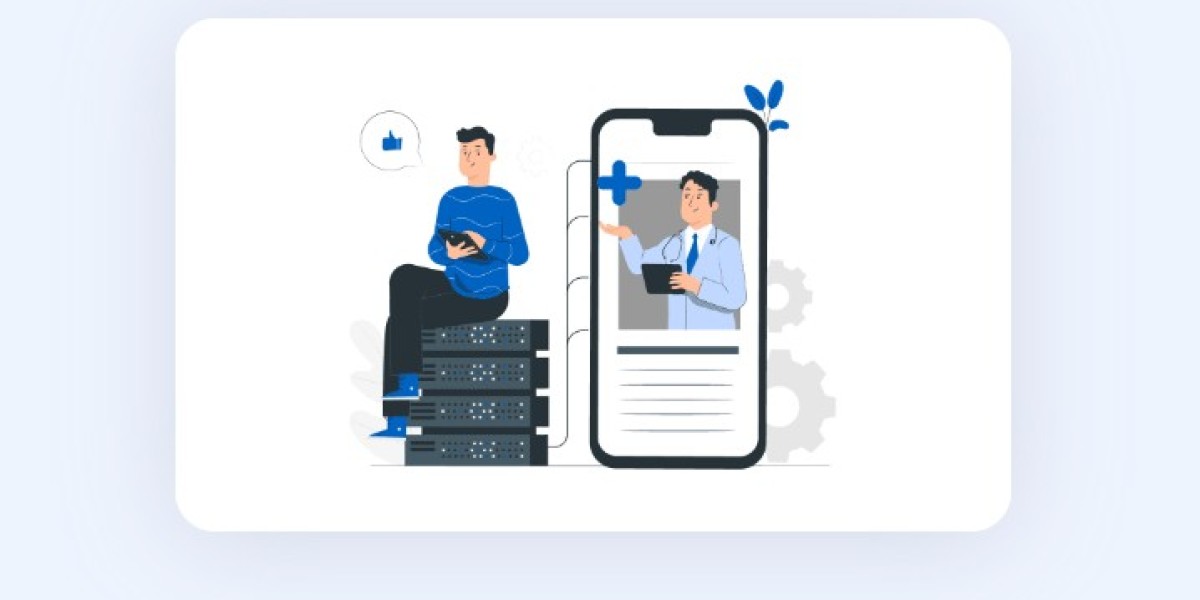Telemedicine apps are revolutionizing healthcare by offering remote consultations, diagnoses, and treatments through technology. With the increasing demand for online healthcare services, the telemedicine market is growing rapidly. If you are considering developing a telemedicine app, this guide will provide you with a comprehensive overview of the steps involved, from ideation to launch.
In this article, we’ll discuss the key steps on how to create a telemedicine app, including features, design considerations, legal aspects, and best practices to follow for a successful launch.
1. Understand the Telemedicine Market and Your Target Audience
Before you start creating a telemedicine app, you need to understand the market and who your target audience will be. Telemedicine is a broad field, and you should define what kind of healthcare services your app will provide. Will it be for general consultations, mental health support, chronic disease management, or specialized care?
- General Practitioners: Offering virtual consultations, follow-ups, and prescriptions.
- Specialists: Providing remote consultations in specific fields like dermatology, psychiatry, or cardiology.
- Chronic Care Management: Supporting patients with long-term conditions such as diabetes, hypertension, or asthma.
- Mental Health Care: Enabling virtual therapy or counseling sessions.
By identifying the target audience early on, you can customize your features and design accordingly to meet their needs. For instance, elderly users might require a simplified interface, while younger users might be more tech-savvy and prefer advanced features.
2. Key Features of a Telemedicine App
When learning how to create a telemedicine app, one of the first steps is deciding on the key features that will make your app functional and user-friendly. Below are some essential features every telemedicine app should have:
a) User Profiles
Users should be able to create personal accounts to store their health records, consultation history, and prescriptions. These profiles will allow healthcare providers to review a patient’s medical history before offering any consultation.
b) Video and Audio Consultations
The core feature of any telemedicine app is the ability to facilitate real-time video or audio consultations between healthcare professionals and patients. A reliable, high-quality, and secure video conferencing system is essential for the effectiveness of your app.
c) Appointment Scheduling
Patients should be able to schedule, reschedule, and cancel appointments with healthcare providers at their convenience. This feature should include calendar integration and automatic reminders to reduce missed appointments.
d) E-Prescriptions
Allow healthcare providers to write and send prescriptions electronically. This feature can include integration with pharmacies so that patients can easily receive prescribed medications.
e) Payment Integration
To monetize your app, you need to integrate a secure payment gateway. Offer multiple payment options such as credit cards, e-wallets, and insurance claims, ensuring compliance with healthcare regulations.
f) Secure Messaging
In addition to video consultations, secure text messaging functionality can help patients and doctors communicate effectively for follow-up questions or health advice.
g) Medical Record Management
Ensure that patient records, including past consultations, test results, prescriptions, and treatment plans, are stored securely in the app. This should comply with data protection laws like HIPAA (Health Insurance Portability and Accountability Act) in the U.S. or GDPR in the EU.
h) Notifications and Alerts
Send real-time alerts to users about their upcoming appointments, new prescriptions, or any changes to their treatment plan. It keeps the user engaged and informed throughout the consultation process.
i) Doctor Search and Ratings
Patients should be able to search for healthcare providers based on specialty, location, availability, and patient ratings. This helps users make informed decisions when choosing a doctor for consultations.
j) Analytics and Reporting
Provide healthcare providers with data analytics tools to monitor their performance, track patient outcomes, and optimize treatment strategies. Additionally, patients can benefit from health tracking features that help monitor their progress.
3. Designing the Telemedicine App
Design plays a crucial role in how to create a telemedicine app that users will love. Your design should be intuitive, easy to navigate, and accessible for a wide range of users. Here are some design tips:
a) User-Friendly Interface (UI)
The user interface should be clean and easy to navigate. Simple, straightforward layouts and clearly labeled buttons ensure that users can access the features they need without confusion.
b) Accessibility
Incorporate accessibility features such as high-contrast text, voice commands, and font size adjustments to accommodate users with disabilities or elderly individuals who may have difficulty with regular interfaces.
c) Branding and Aesthetics
The design of your app should reflect your brand identity, with a color scheme and logo that resonates with users. Use calming colors like blue and green, which are often associated with healthcare, to make users feel comfortable.
d) Responsiveness
Ensure that the app is responsive across different devices, whether it’s a smartphone, tablet, or desktop. Test the app on multiple screen sizes and operating systems to guarantee a smooth user experience.
4. Legal and Regulatory Compliance
One of the most critical aspects of how to create a telemedicine app is ensuring compliance with healthcare regulations. These regulations vary by region, but some key compliance standards include:
a) HIPAA Compliance (USA)
If you are targeting users in the U.S., your app must comply with HIPAA guidelines, which ensure the confidentiality and security of patients' health data. This involves secure data storage, encryption, and access controls.
b) GDPR Compliance (EU)
For users in the European Union, the General Data Protection Regulation (GDPR) outlines strict rules for handling personal data. It mandates that users should consent to data collection and have the right to request the deletion of their data.
c) Medical Licensure
Doctors must be licensed to practice telemedicine in the state or country where the patient resides. Ensure that your app only connects patients with healthcare professionals who meet the required licensing standards.
d) Payment Security and Data Protection
As your app will be handling sensitive patient data and payments, it must follow stringent security measures to protect against data breaches. Use encryption and secure payment gateways to protect personal information.
5. Choosing the Right Technology Stack
To build a telemedicine app, choosing the right technology stack is essential for scalability, performance, and security. Here are some technologies to consider:
a) Frontend Development
The frontend of the app will include the user interface. Technologies like React Native or Flutter are excellent for cross-platform development, allowing you to create apps for both iOS and Android with a single codebase.
b) Backend Development
The backend will manage user data, appointments, payment processing, and more. Technologies like Node.js, Ruby on Rails, or Django are popular choices for building robust backend systems.
c) Video Communication
For real-time video and audio consultations, you’ll need a reliable communication API. Consider using services like Twilio, Agora, or WebRTC for video calls, which provide the necessary infrastructure for telemedicine communication.
d) Database Management
A secure database is required to store sensitive patient data. MongoDB, MySQL, or PostgreSQL are all viable options depending on your app’s needs.
e) Cloud Hosting
Cloud solutions like AWS, Google Cloud, or Microsoft Azure can provide the necessary scalability, security, and data storage for your telemedicine app.
6. Testing and Quality Assurance
Before launching your telemedicine app, ensure it undergoes thorough testing to avoid issues post-launch. Focus on the following areas:
a) Functional Testing
Ensure all features, such as appointment scheduling, video calls, e-prescriptions, and payment systems, function as intended.
b) Usability Testing
Test the app’s usability with real users to identify any interface issues, bottlenecks, or areas that need improvement.
c) Security Testing
Given the sensitive nature of healthcare data, perform rigorous security testing to ensure patient data is protected from breaches and cyberattacks.
d) Performance Testing
Test the app under varying loads to ensure it remains fast and responsive even when multiple users access the platform simultaneously.
7. Launching and Marketing the App
Once your telemedicine app is ready, it’s time for the launch. Here are some marketing strategies to consider:
a) Launch on App Stores
Make your app available on Google Play and the Apple App Store, ensuring it complies with their guidelines.
b) Build Partnerships with Healthcare Providers
Collaborate with healthcare institutions, clinics, and hospitals to promote your app to their patients.
c) Digital Marketing Campaigns
Use SEO, social media marketing, email marketing, and influencer partnerships to reach a broader audience. Highlight the app’s unique selling points, such as convenience and accessibility.
Conclusion
Creating a telemedicine app requires careful planning, attention to detail, and compliance with legal regulations. By focusing on user-friendly design, essential features, security, and market research, you can develop an app that meets the needs of patients and healthcare providers alike. With telemedicine expected to continue growing, now is the perfect time to invest in creating an app that can transform the healthcare experience for users around the world.



